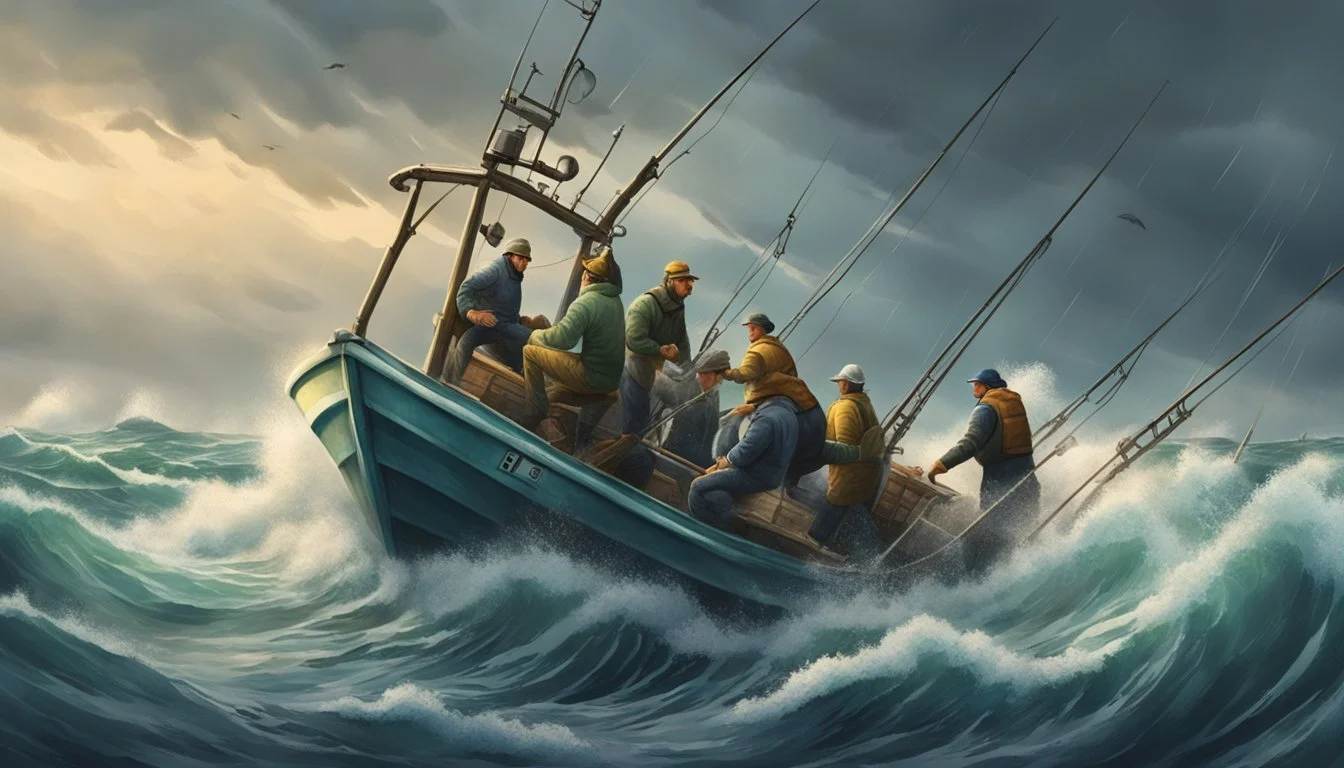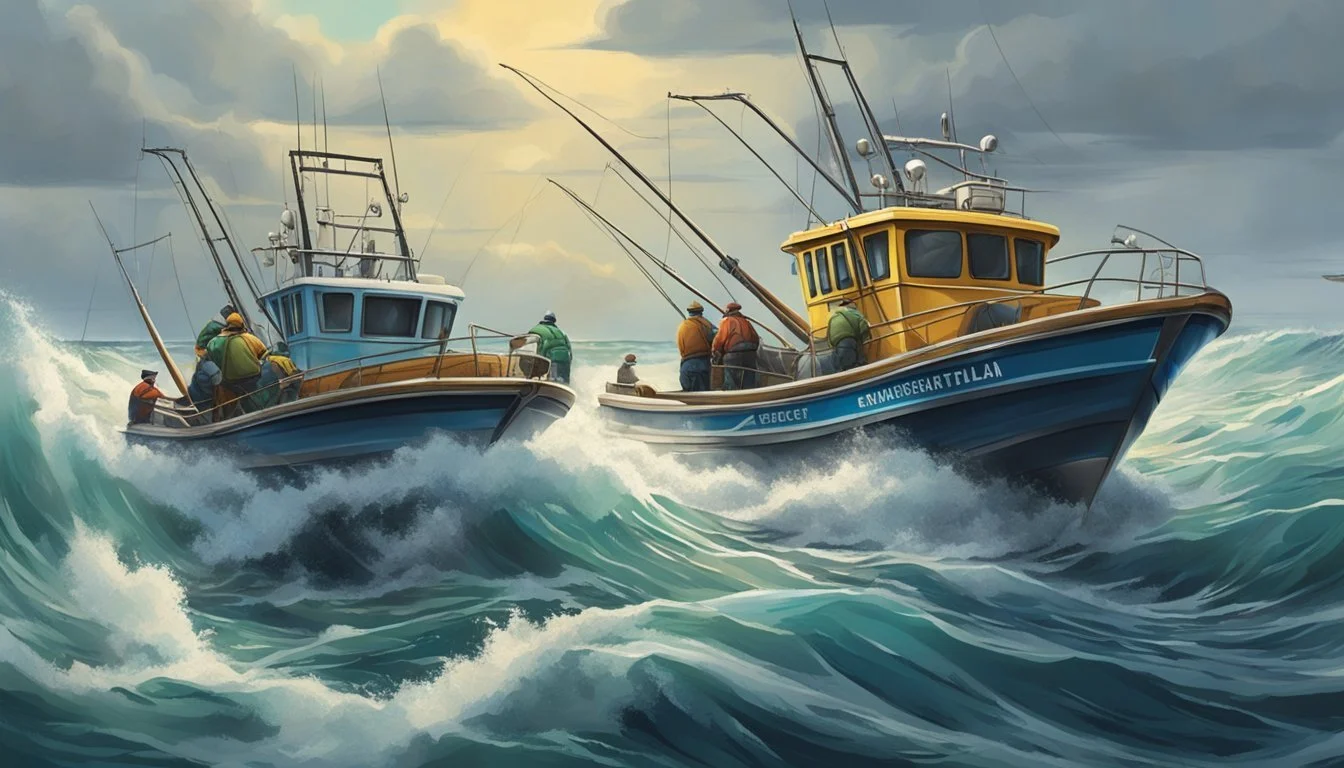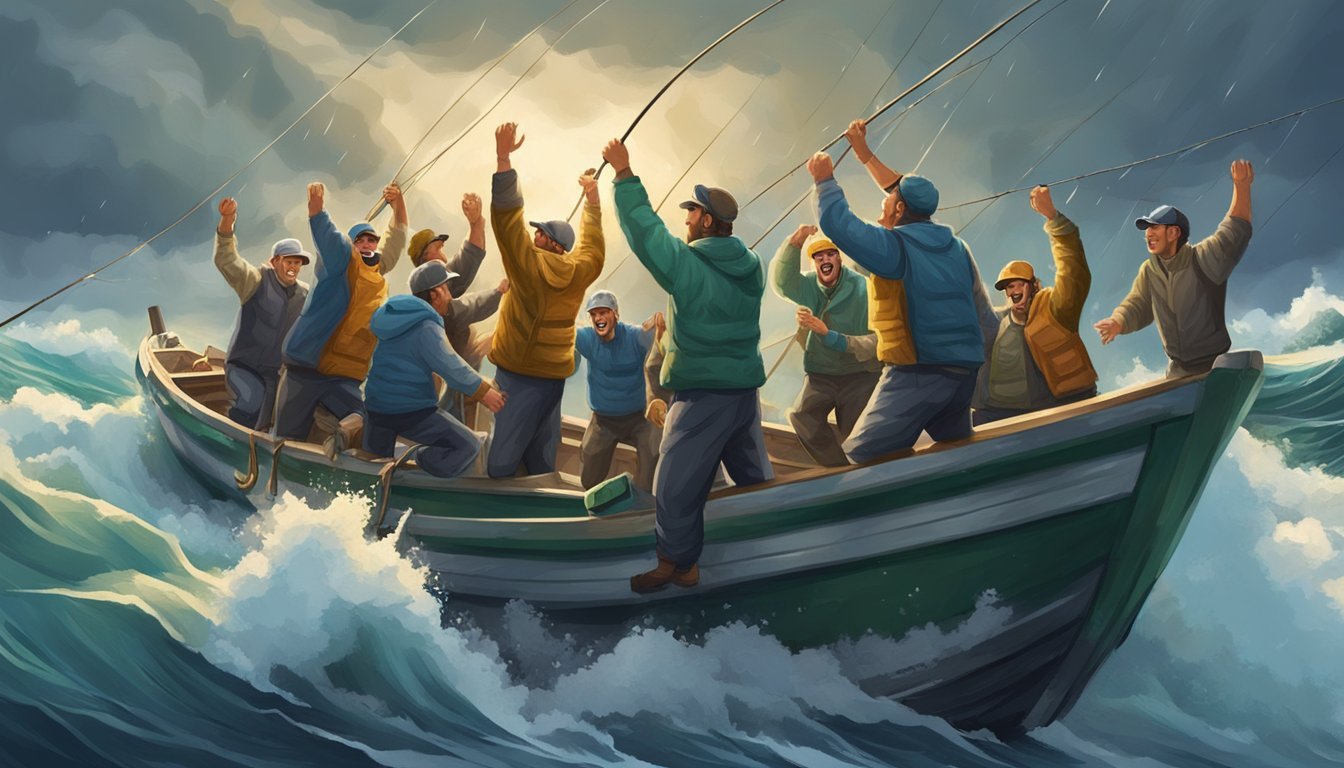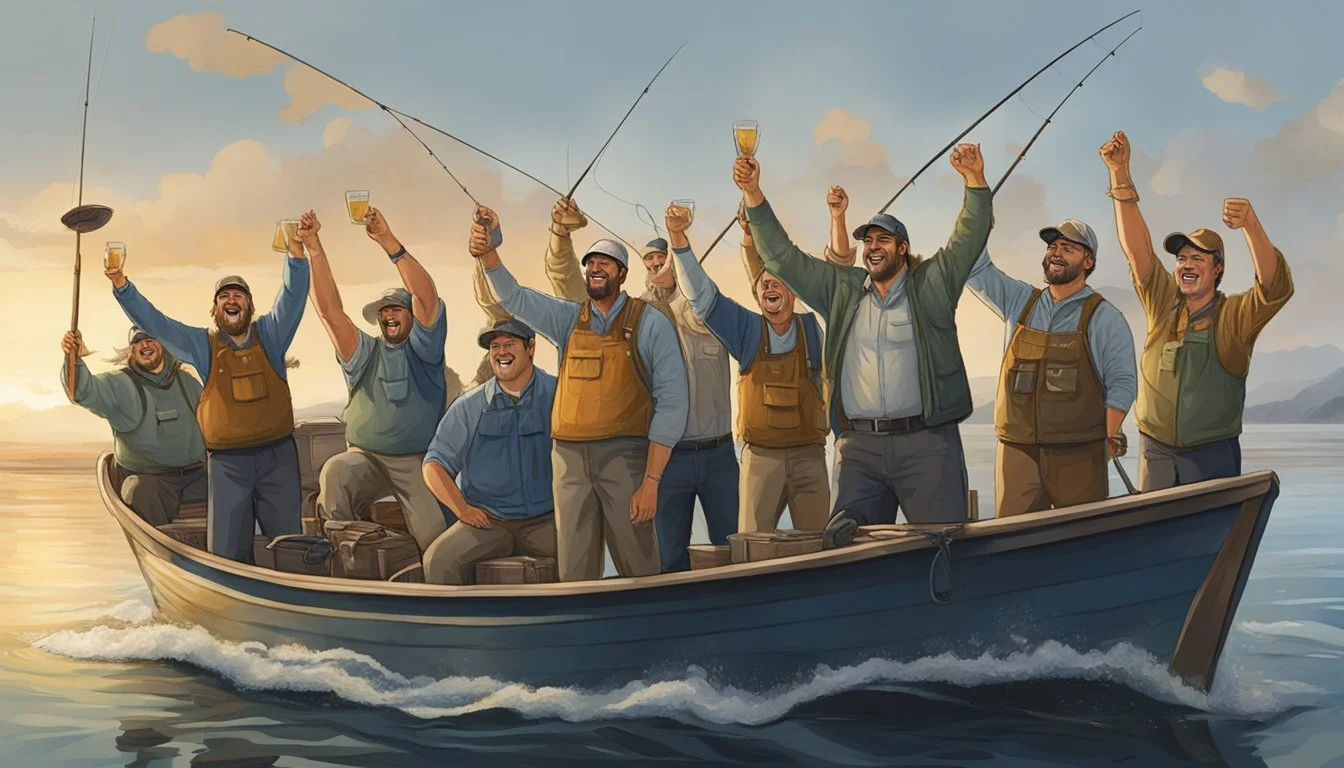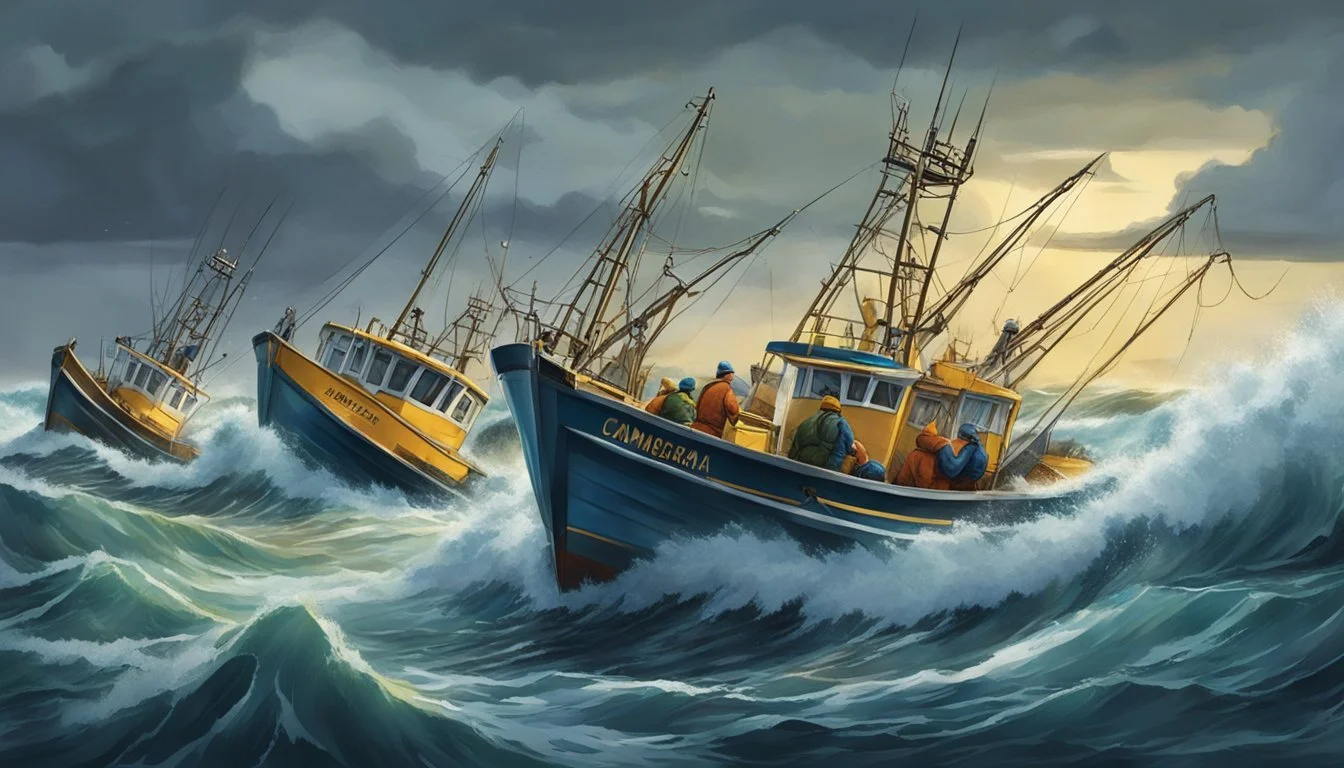Deadliest Catch's Most Heartwarming Moments of Camaraderie
Crews Unite in Challenging Waters
Deadliest Catch has captivated audiences with its intense portrayal of crab fishing in the treacherous Bering Sea. While the show often focuses on the dangers and challenges faced by the crews, it also showcases moments of genuine camaraderie that warm viewers' hearts.
These heartwarming instances reveal the strong bonds formed between fishermen as they battle harsh conditions and pursue their livelihoods on the open water. From celebrating successful catches to supporting each other through personal struggles, the cast members demonstrate a unique fellowship that transcends the competitive nature of commercial fishing.
The Discovery Channel series has featured numerous touching scenes over its long run. Crews have rallied around captains facing health issues, experienced deckhands have mentored newcomers, and rival boats have set aside differences to assist one another in times of crisis. These moments of unity and compassion provide a poignant contrast to the typically brutal environment depicted on Deadliest Catch.
The Allure of the Bering Sea
The Bering Sea captivates with its raw power and bountiful resources. Its treacherous waters test the mettle of even the most seasoned fishermen while offering the promise of lucrative catches.
Navigating Nature's Challenges
The Bering Sea is notorious for its unpredictable and harsh conditions. Rogue waves can tower over 30 feet, threatening to capsize vessels in an instant. High winds whip across the open water, creating blinding snowstorms and icy sprays that coat decks in treacherous layers of ice.
Temperatures plummet well below freezing, turning simple tasks into grueling ordeals. Crews face constant battles against hypothermia and frostbite. The Southern Wind, a powerful current, can push boats off course and into dangerous situations.
Despite these perils, fishermen return year after year, drawn by the thrill of conquest over nature's fury.
The Spirit of Alaskan Crab Fishing
Alaskan crab fishing embodies a unique blend of tradition, grit, and camaraderie. The fishing season brings a surge of energy to coastal communities as boats prepare to set out.
Crews work tirelessly, often for days on end, hauling heavy crab pots from icy waters. This demanding job requires physical strength, mental fortitude, and unwavering focus. The payoff can be substantial, with successful trips yielding catches worth hundreds of thousands of dollars.
The shared experience of facing danger creates strong bonds among crew members. They rely on each other not just for work, but for survival in one of the world's most dangerous jobs.
Brotherhood on the High Seas
The treacherous waters of the Bering Sea forge unbreakable bonds among crab fishermen. Through fierce storms and bountiful catches, captains and crews rely on each other for survival and success.
Support Through Storms
When gale-force winds batter the F/V Northwestern, Captain Sig Hansen rallies his crew to secure loose gear. Deckhands work tirelessly in icy conditions, trusting their lives to each other's vigilance. On the Time Bandit, Johnathan Hillstrand offers words of encouragement as massive waves crash over the deck.
The Cornelia Marie faces engine trouble mid-season. Captain Jake Anderson of the F/V Saga, despite being a competitor, diverts his course to assist. He provides crucial parts, demonstrating the fishermen's code of mutual aid.
During a medical emergency on the Northwestern, rival boats pause their fishing to relay vital information to the Coast Guard. This coordinated effort showcases the fleet's unity in times of crisis.
Shared Moments of Triumph
As the F/V Saga pulls in a record-breaking string of pots, Jake Anderson invites his mentor Sig Hansen to witness the spectacle. The two captains celebrate together, their competitive spirit giving way to genuine pride in each other's accomplishments.
On the Time Bandit, Johnathan Hillstrand shares the helm with a rookie deckhand during a particularly lucrative fishing spot. This gesture of trust and mentorship exemplifies the passing of knowledge between generations of fishermen.
The fleet gathers for an end-of-season party, swapping stories and honoring fallen comrades. Captains and deckhands alike raise a toast to their shared struggles and victories on the Bering Sea.
Vessels of Determination
The crab fishing vessels of the Bering Sea embody resilience and teamwork. These floating fortresses test crew bonds and mechanical limits in harsh conditions.
Legends of the Fleet
The Time Bandit, captained by the Hillstrand brothers, stands out for its tight-knit crew. Their camaraderie shines through during intense fishing seasons and treacherous 5-year storms. The F/V Northwestern, led by Captain Sig Hansen, boasts a reputation for efficiency and safety. Its crew's ability to work seamlessly together has saved them from potential disasters.
Captain "Wild" Bill Wichrowski's Summer Bay, though smaller, proves mighty in determination. The vessel's crew demonstrates exceptional teamwork when facing mechanical failures or competing against larger boats. Their collective spirit often results in impressive hauls despite challenging circumstances.
Maintaining Seaworthiness
Keeping vessels operational in the unforgiving Bering Sea requires constant vigilance and teamwork. Crews work tirelessly to prevent mechanical failures that could lead to disaster. The Northwestern's engineering team is known for their proactive maintenance, often spotting and fixing issues before they become critical.
On the Time Bandit, all hands pitch in during emergencies. When faced with a flooding engine room, the crew's quick response and unified effort prevented a potential sinking. The Summer Bay's team showcases adaptability, creatively solving problems with limited resources. Their ingenuity has kept the vessel fishing through situations that might have sent other boats back to port.
Lifesaving Acts and Coast Guard Collaborations
The dangerous waters of the Bering Sea have witnessed numerous heroic rescues and collaborations between crab fishing crews and the U.S. Coast Guard. These incidents highlight the critical importance of preparedness and teamwork in life-threatening situations.
Dramatic Rescues at Sea
Deadliest Catch has captured several heart-stopping rescue operations over the years. In one harrowing incident, a rogue wave severely injured deckhand Francis Katangan on the Patricia Lee. The Coast Guard braved treacherous conditions to perform a medevac, showcasing their unwavering commitment to saving lives.
Another memorable rescue occurred when Captain Jonathan Hillstrand of the Time Bandit spotted a distressed fishing vessel. His quick action and coordination with authorities led to a successful rescue operation, demonstrating the fishermen's solidarity in times of crisis.
Partnership with the US Coast Guard
The show has fostered a strong partnership between crab fishing crews and the U.S. Coast Guard. This collaboration has led to improved safety protocols and more efficient rescue operations in the Bering Sea.
The Coast Guard maintains a constant presence in the area, ready to respond to distress calls. Their expertise in handling "man down" situations and locating vessels "lost at sea" has proven invaluable.
This partnership has also contributed to maritime law reforms. Enhanced safety regulations for fishing vessels operating in the Bering Sea were implemented as a result of the increased awareness brought by Deadliest Catch.
Triumph Over Personal Adversity
The Deadliest Catch crews face immense challenges at sea, but some of their toughest battles occur off the boats. These fishermen have shown remarkable resilience in overcoming serious injuries, illnesses, and personal struggles.
Overcoming Injury and Illness
Phil Harris demonstrated incredible grit after suffering a massive stroke in 2010. Despite doctors' grim prognosis, he fought to recover and even insisted filming continue from his hospital bed. His determination inspired viewers and fellow captains alike.
Keith Anderson battled back from a severe shoulder injury that threatened his fishing career. Through intensive physical therapy and sheer willpower, he regained strength and returned to captain his vessel.
Several deckhands have overcome serious on-the-job injuries as well. Crushed limbs, severe lacerations, and broken bones are occupational hazards they've faced with courage.
Battling Personal Demons
Drug addiction has plagued multiple Deadliest Catch cast members. Nick McGlashan's struggle with heroin and alcohol addiction was well-documented on the show. He fought hard to get clean, sharing his recovery journey to help others.
Jake Harris also battled substance abuse issues that impacted his work on the Northwestern. With support from his family and crew, he sought treatment to overcome his addiction.
Family tragedies have tested the mental fortitude of many fishermen. The loss of loved ones weighs heavily, but they've shown strength in honoring fallen family members by continuing their legacy at sea.
Celebrating Milestones and Achievements
The Deadliest Catch crews mark important occasions with heartfelt moments of recognition and remembrance. These celebrations highlight the strong bonds formed in the face of danger.
Memorable Season Finales
Season finales often feature emotional reunions as crews return to port. Captain Jake Anderson's first successful season as skipper was commemorated with a dockside party. His team proudly displayed their catch, sharing hugs and congratulations.
Sig Hansen surprised daughter Mandy with a promotion to full-time deck boss during one finale. The touching father-daughter moment showcased the family legacy continuing.
Josh Harris honored his late father Phil's memory by scattering his ashes at sea during a poignant season-ending ceremony. The Northwestern crew joined to pay respects.
Honoring the Memory of Fallen Captains
The fishing community comes together to remember those lost at sea. A fleet-wide tribute was held for Captain Phil Harris, with boats lining up to lay wreaths on the water.
Crews often place commemorative buoys on crab pots to honor fallen friends. The Cornelia Marie decorated pots with Phil's lucky number 21 in his memory.
Jake Anderson named his boat the Saga in tribute to his mentor, Captain John Hillstrand. The christening ceremony was a bittersweet celebration of John's impact.
Legacy and Future of the Catch
"Deadliest Catch" has left an enduring mark on reality television and Alaskan fishing communities. The show's impact extends beyond entertainment, influencing perceptions and livelihoods.
Passing Down Traditions
Fishing vessels on "Deadliest Catch" often become family heirlooms. Captains like Sig Hansen pass their knowledge and expertise to the next generation. This ensures the continuation of Alaskan crab fishing traditions.
Young deckhands learn the ropes from seasoned veterans. They gain skills in navigating treacherous waters and operating complex equipment. This transfer of knowledge helps preserve the industry's rich heritage.
The show has inspired many viewers to pursue careers in commercial fishing. It has brought attention to the importance of sustainable fishing practices. As a result, more people now understand the challenges faced by fishing communities.
Adapting to Changing Seas
Climate change and overfishing have forced crabbers to adapt their methods. Fishing vessels now use advanced technology to locate crab populations more efficiently. This helps reduce fuel consumption and minimize environmental impact.
Captains like Sig Hansen have embraced new quota systems and regulations. These measures aim to protect crab populations and ensure long-term sustainability. The show has documented these changes, educating viewers about conservation efforts.
The future of Alaskan crab fishing faces uncertainty due to shifting marine ecosystems. Crews must now be more versatile, sometimes targeting different species. This adaptability is crucial for the industry's survival in changing times.



